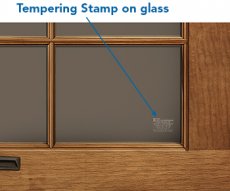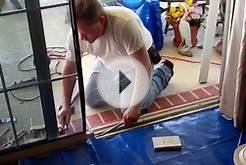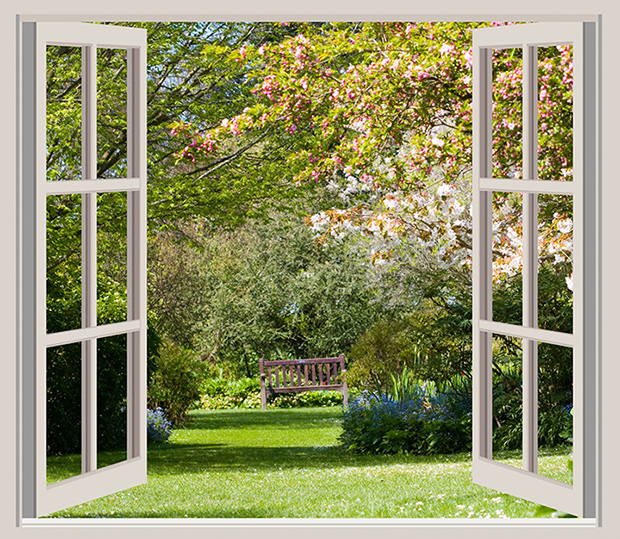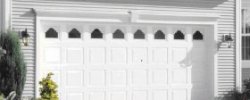Should I call Guardian if I need help with my window or door?
If you have a window or sliding glass door that needs parts, repair or replacement and it has a “Guardian” stamp on the glass, the stamp simply means the glass was “tempered” by Guardian to make it stronger. We did not make the window or door.
Guardian does not manufacture windows or doors – we make glass for window/door manufacturers who use the glass in their products. Warranty, repair, parts and replacement issues for windows and doors should be directed to the window/door manufacturer. The manufacturer may be identified on the crank, latch, other hardware or on the spacer material between the two pieces of glass if it is an insulating glass unit. If there are no identifying marks on the window and you know the company/builder of your house they may be able to help.

Can you explain what Low-E coatings are?
Low- E stands for low emissivity. Windows with low-E coatings reduce the amount of heat that is transmitted through the glass. Many homeowners have experienced sitting next to an older window and felt either excessive heat or an extreme chill; Low-E coatings were invented to reduce these uncomfortable scenarios. What exactly is a Low-E coating though? Low-E coatings are made up of a series of nearly invisible layers of various materials and rely on one or more silver layers to reflect exterior and interior heat.
But, how do Low-E coatings work?
Low-E coatings reflect heat (both solar and ambient) to keep a home cool in the summer and reduce heat from escaping the interior of a home in the winter. The goal of a Low-E coating is to improve total home comfort, with the added bonus of reducing energy costs. Low-E coatings keep heat where homeowners want it and reduce it from entering where they don’t.
What types of Low-E are there?
There are two main types of Low-E coatings that may be applied to glass. Each type of Low-E coating is used in different regions based on regional climate demands.
High-solar-gain Low-E
High-solar-gain Low-E coatings are designed for cold northern climates and allow large amounts of solar heat and natural light into a room. This Low-E coating takes advantage of the passive heat gain from the sun while keeping interior heat from escaping.
Low-solar-gain Low-E
Low-solar-gain Low-E coatings are designed for hot southern climates to allow a minimal amount of solar heat to enter a room, while permitting moderate amounts of natural light.
Does a Low-E coating prevent fading?
Besides reflecting heat, Low-E coatings also reduce fading by partially reflecting damaging UV rays and acting as sunscreen for furnishings and floors.
Do Low-E coatings also affect visibility?
Certain Low-E coatings may reduce the amount of light able to pass through a window or may appear to have a slight tint. These Low-E coatings are mainly used in southern climates where it is beneficial to have a slight tint to reduce glare and heat gain.
Can you explain how a home gains heat? How does it lose heat?
Heat gain is the total increase in the internal temperature of a building due to exposure to solar and ambient heat sources. Heat gain is primarily due to a building’s exposure to the sun. As sunlight strikes the surfaces (roof and walls) of a home it is converted to heat and permeates into the home. Windows, however, transmit sunlight directly into the interior of a building, converting sunlight to heat as it strikes furnishings or floors. A building may also gain a slight amount of heat from ambient external sources such as the actual outdoor temperature and nearby objects, or indoor sources such as appliances, artificial lighting, and people.
The opposite of heat gain is, of course, heat loss; instead of heat entering a building, it is attempting to escape. Heat naturally flows towards cooler spaces; interior heat will try to flow through windows, walls, and ceilings into the cool environment.
What is the Solar Heat Gain Coefficient?
As most homeowners know, direct exposure to the sun can cause an interior space to warm dramatically. The Solar Heat Gain Coefficient is the measure of how much of the sun’s heat a window allows to pass through, resulting in an increase in room temperatures. The lower the Solar Heat Gain Coefficient the more heat a window is able to block. Depending on where a home is located, a homeowner may desire windows with either a higher or lower Solar Heat Gain Coefficient.
What do U-value and R-value mean?
High performance windows are designed to insulate homes against heat gain or heat loss. Homeowners prefer windows that insulate extremely well and improve the overall comfort of a home and room. How well a window insulates is measured as the U-value. The U-value measures how much heat will transfer through a window. The lower the U-value, the better a window insulates by means of reducing heat flow and maintaining comfortable temperatures.
The R-value is the opposite of the U-value; it depicts a windows total resistance to heat loss. The R-value is used mainly to compare windows with walls, insulation, and other home fixtures. The higher the R-value, the greater resistance a window has to heat loss.
How do windows insulate my home?
The construction and installation of a window determines how well it insulates. Manufacturers play a critical role in creating windows that insulate well. Furthermore, proper installation of a window is extremely important to achieve its full insulating performance. Windows insulate by reducing heat flow, which is the transfer of heat from a warm space to a cooler space. Modern dual-pane windows include an air or gas-filled space between two panes of glass, which insulates much better than a single-pane window. As mentioned above, Low-E coatings also reflect heat energy from the window to further improve its insulating properties.
What is the National Fenestration Rating Council (NFRC)?
The NFRC is a non-profit organization that provides fair and accurate window labeling and ratings based on energy efficiency and performance. Windows that are certified by the NFRC have undergone several quality inspections and energy efficiency tests. Certified windows are adorned with a label depicting the most important window performance information.
What is ENERGY STAR?
The ENERGY STAR program is run by the Environmental Protection Agency, in conjunction with the Department of Energy, within the United States and by Natural Resources Canada. The purpose of The ENERGY STAR program is to encourage window and other manufacturers to voluntarily develop energy efficient products. Windows that meet certain energy saving requirements are given the blue Energy Star label, meaning a product has gone through stringent quality and performance tests and met energy saving criteria.








